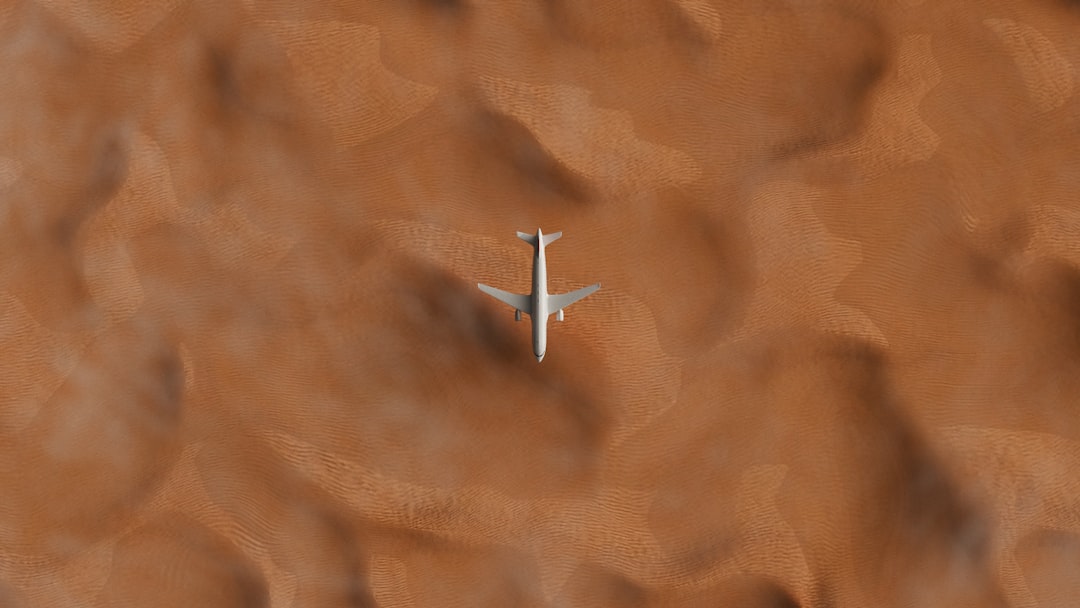Remote viewing is a fascinating phenomenon that has captured the imagination of many, blending elements of psychology, parapsychology, and even science fiction. It refers to the practice of attempting to perceive or describe details about a distant or unseen target using extrasensory perception (ESP) or “anomalous cognition.
As a result, remote viewing became a subject of serious investigation, leading to various programs aimed at exploring its potential applications.
The allure of remote viewing lies in its promise of transcending the limitations of time and space. Proponents argue that individuals can tap into a collective consciousness or universal mind, allowing them to access information beyond the physical realm. This idea challenges conventional understandings of perception and cognition, raising questions about the nature of reality itself.
As interest in remote viewing continues to grow, it invites both skepticism and curiosity, prompting further exploration into its validity and implications.
Key Takeaways
- Remote viewing is a psychic ability that allows individuals to perceive and describe details about a distant or unseen target.
- Ingo Swann is considered the father of remote viewing and is known for his groundbreaking work in the field.
- Ingo Swann’s remote viewing of Mars as part of the Mars Exploration Project yielded intriguing and controversial findings.
- Remote viewing is a method used to access information about a distant or unseen target using extrasensory perception.
- The accuracy of Ingo Swann’s remote viewing of Mars has sparked debate and raised questions about the nature of space exploration.
Ingo Swann: The Father of Remote Viewing
Ingo Swann is often regarded as the father of remote viewing, a title he earned through his pioneering work in the field. Born in 1933, Swann was an artist and writer who became deeply interested in the potential of human consciousness. His journey into remote viewing began in the 1970s when he participated in research conducted by the Stanford Research Institute (SRI).
It was here that he developed techniques that would later become foundational to the practice of remote viewing. Swann’s contributions to remote viewing were not merely theoretical; he actively engaged in experiments that demonstrated his abilities. His most notable achievement was his involvement in the U.S.
government’s Stargate Project, which aimed to investigate psychic phenomena for military and intelligence purposes. Swann’s work not only established him as a key figure in the field but also sparked interest in the broader implications of human consciousness and its untapped potential.
The Mars Exploration Project

The Mars Exploration Project represents humanity’s quest to understand the Red Planet, a celestial body that has fascinated scientists and dreamers alike for centuries. With advancements in technology, space agencies like NASA have launched numerous missions to explore Mars, seeking answers about its geology, climate, and potential for life. These missions have included orbiters, landers, and rovers, each contributing valuable data to our understanding of this enigmatic planet.
As interest in Mars grew, so did the desire to explore it through unconventional means. The idea of using remote viewing as a tool for Mars exploration emerged as an intriguing possibility. Proponents believed that individuals trained in remote viewing could provide insights into Martian landscapes and phenomena that traditional scientific methods might overlook.
This intersection of remote viewing and space exploration opened new avenues for inquiry, challenging established paradigms and inviting innovative approaches to understanding our neighboring planet.
Ingo Swann’s Remote Viewing of Mars
| Metrics | Data |
|---|---|
| Target | Mars |
| Remote Viewer | Ingo Swann |
| Accuracy | Controversial |
| Details | Alleged structures and civilization |
| Impact | Debate in the field of parapsychology |
Ingo Swann’s foray into remote viewing Mars is one of the most compelling narratives within the realm of psychic exploration. During a series of sessions conducted in the 1970s, Swann claimed to have perceived various aspects of Mars, including its topography and potential signs of life. His descriptions were detailed and vivid, painting a picture of a planet that was not merely barren but teeming with possibilities.
Swann’s remote viewing sessions reportedly revealed features such as vast canyons, unusual structures, and even indications of intelligent life forms. These claims were met with both intrigue and skepticism, as they challenged conventional scientific understanding at the time. Nevertheless, Swann’s experiences contributed to a growing body of evidence suggesting that human consciousness might be capable of accessing information beyond ordinary perception.
What is Remote Viewing?
Remote viewing is often described as a structured method for accessing information about a target without any direct sensory input. Practitioners typically undergo training to develop their intuitive abilities, learning techniques to quiet the mind and focus on specific targets. The process often involves guided meditation or visualization exercises designed to enhance one’s capacity for extrasensory perception.
At its core, remote viewing operates on the premise that consciousness is not confined to the physical body or immediate environment. Instead, it posits that individuals can tap into a universal consciousness that transcends time and space. This concept raises profound questions about the nature of reality and human potential, suggesting that there may be more to perception than meets the eye.
The Accuracy of Ingo Swann’s Remote Viewing

The accuracy of Ingo Swann’s remote viewing sessions has been a topic of considerable debate among enthusiasts and skeptics alike. While some supporters point to instances where his descriptions aligned with later scientific findings, critics argue that such coincidences are insufficient to validate remote viewing as a reliable method. The subjective nature of Swann’s experiences complicates efforts to assess their accuracy objectively.
Despite the controversy surrounding his claims, Swann’s work has inspired further research into the potential applications of remote viewing. His sessions have been analyzed for patterns and consistencies, leading some researchers to suggest that there may be underlying principles governing successful remote viewing experiences. This ongoing exploration continues to fuel interest in the field and raises questions about how human consciousness interacts with the universe.
Comparing Ingo Swann’s Findings to Actual Mars Exploration
The comparison between Ingo Swann’s findings during his remote viewing sessions and actual Mars exploration results presents an intriguing case study in the intersection of psychic phenomena and scientific inquiry. Some of Swann’s descriptions have drawn parallels with discoveries made by NASA missions, such as the identification of Martian canyons and unusual geological formations. However, it is essential to approach these comparisons with caution.
While certain aspects of Swann’s visions may align with later scientific findings, attributing these coincidences solely to remote viewing remains contentious. Critics argue that confirmation bias may play a role in interpreting Swann’s insights as accurate predictions rather than mere happenstance. Nevertheless, these comparisons continue to spark discussions about the potential for integrating unconventional methods into scientific exploration.
The Implications of Swann’s Remote Viewing on Space Exploration
The implications of Ingo Swann’s remote viewing on space exploration extend beyond mere curiosity; they challenge established paradigms within both science and philosophy. If remote viewing can indeed provide insights into distant celestial bodies like Mars, it raises questions about the limitations of traditional scientific methods and our understanding of consciousness itself. Moreover, Swann’s work invites consideration of how human intuition and perception might complement technological advancements in space exploration.
As scientists continue to push the boundaries of what is possible in understanding our universe, integrating diverse approaches—including those rooted in psychic phenomena—could lead to groundbreaking discoveries and a more holistic understanding of existence.
The Scientific Community’s Response to Remote Viewing
The scientific community’s response to remote viewing has been largely skeptical, with many researchers dismissing it as pseudoscience lacking empirical support. Critics argue that claims made by practitioners like Ingo Swann are anecdotal and fail to meet rigorous scientific standards for validation. This skepticism is rooted in a broader reluctance within mainstream science to embrace concepts that challenge established paradigms.
However, there remains a subset of researchers who advocate for further investigation into remote viewing and its potential applications. They argue that dismissing such phenomena outright may hinder progress in understanding consciousness and its capabilities. As interest in interdisciplinary approaches grows, there may be opportunities for collaboration between traditional scientific inquiry and explorations into psychic phenomena.
Exploring the Mysteries of Mars through Remote Viewing
Exploring the mysteries of Mars through remote viewing offers a unique lens through which to examine both the planet itself and the nature of human perception. As scientists continue their quest for knowledge about Mars—its geology, climate, and potential for life—remote viewing presents an alternative avenue for inquiry that challenges conventional methodologies. By engaging with remote viewing as a complementary tool rather than a replacement for traditional exploration methods, researchers may uncover new insights into Martian landscapes and phenomena.
This approach encourages an open-minded exploration of possibilities while acknowledging the limitations inherent in both scientific inquiry and psychic exploration.
The Future of Remote Viewing in Space Exploration
The future of remote viewing in space exploration remains uncertain yet filled with potential. As humanity continues its journey into the cosmos, there may be opportunities to integrate unconventional methods alongside technological advancements. The ongoing exploration of consciousness could yield insights that enhance our understanding not only of distant planets but also of our place within the universe.
As interest in remote viewing persists, it may inspire new generations of researchers to investigate its validity further. By fostering an environment that encourages interdisciplinary collaboration between science and psychic exploration, humanity may unlock new dimensions of understanding—both on Earth and beyond—ultimately enriching our quest for knowledge about the cosmos.
Ingo Swann, a renowned figure in the field of remote viewing, is often celebrated for his intriguing claims of having remotely viewed Mars, describing its landscapes and potential life forms long before modern technology could confirm or deny such possibilities. For those interested in exploring more about the fascinating world of remote viewing and its implications, an article on the topic can be found on X File Findings. This article delves into the broader context of remote viewing and its historical significance. To read more, visit the article at X File Findings.
🤯WATCH THIS! The Lost Tape: CIA Psychic Predicted Alien’s Voice
FAQs
What is remote viewing?
Remote viewing is the practice of seeking impressions about a distant or unseen target using paranormal means, such as extrasensory perception (ESP) or “sensing” with the mind.
Who is Ingo Swann?
Ingo Swann was a parapsychology researcher and artist known for his work in the field of remote viewing. He was a co-creator of the Stargate Project, a secret U.S. Army unit established in 1978 at Fort Meade, Maryland, to investigate the potential for psychic phenomena in military and domestic intelligence applications.
What is the significance of Ingo Swann remote viewing Mars?
Ingo Swann claimed to have remote viewed the planet Mars in 1973, before the Viking space probes confirmed the existence of certain features on the planet. His alleged remote viewing of Mars has been a subject of interest and debate among proponents and skeptics of remote viewing and paranormal phenomena.
What did Ingo Swann claim to have seen on Mars during his remote viewing session?
Ingo Swann claimed to have seen various features on Mars, including structures, pyramids, and other anomalies that were later purported to have been confirmed by the Viking space probes. However, these claims have not been scientifically validated and remain controversial within the scientific and remote viewing communities.
Is there scientific evidence to support Ingo Swann’s remote viewing of Mars?
There is no scientific evidence to support Ingo Swann’s claims of remote viewing Mars. Remote viewing is not considered a scientifically validated practice, and the alleged confirmation of his observations by the Viking space probes is not supported by mainstream scientific consensus.
